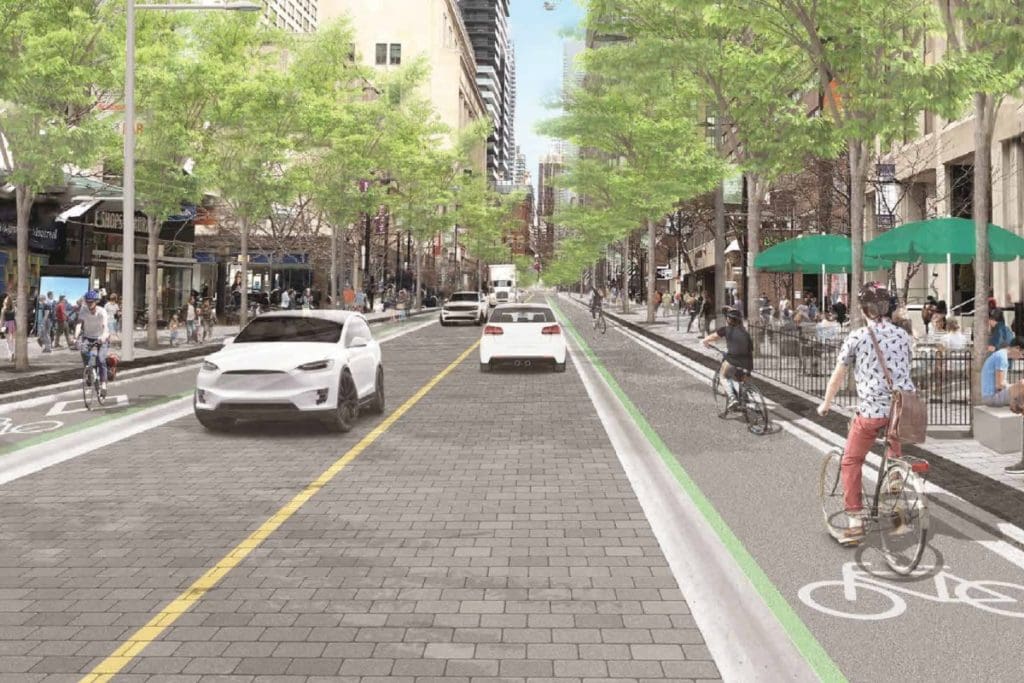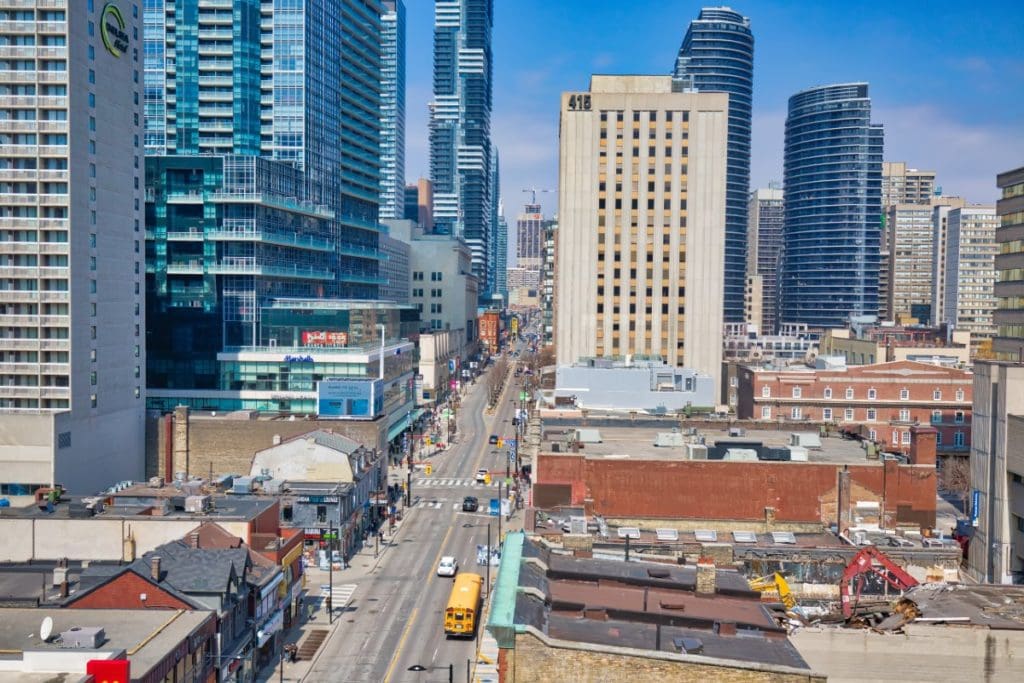What a Difference a Decade Makes!

Toronto / Canada
Toronto is the largest city in Canada with a greater urban area population of over five million. Rob Ford was Mayor of Toronto from December 2010 to 2014. During this time he was one of the most vehement and outspoken opponents of cycling in any major city in the western world.
Ford spoke out against cyclists sharing roads with motorists, which he said were, “…built for buses, cars, and trucks, not for people on bikes.” As councillor, Ford opposed the installation of bike lanes on University Avenue and Jarvis Street.
Bike lanes were installed on Jarvis in 2010 before Ford became Mayor. Ford made it a priority to get them removed during his campaign. As mayor, he was able to get the council to reverse the decision in 2011, a move that was criticized by cycling advocates and led to protests. The Jarvis bike lanes, which cost the city $86,000 to install in 2011, were removed in December 2012 at a cost of $200,000–$300,000, apparently taking the cost for their removal from the city’s already minuscule bike infrastructure budget.
At the time this made worldwide news.
Ford died from cancer in 2016 aged 46 after a life of drug abuse, domestic violence and a range of public scandals.
Now in a move that would make Mr Ford turn in his grave, the Toronto City Council has voted to halve the traffic lanes on the city’s most iconic street, Yonge Street.
As Toronto’s leading mainstream media, The Globe and Mail reported it,
“A decade ago, a debate over rebuilding Yonge would have been conscripted by right-wing councillors into a fight against the alleged “war on the car.” The mere suggestion that cars should lose space to transit or cyclists or walkers was enough to unleash caterwauling. But things have changed. The first pandemic wave a year ago presented cities around the world with an urgent need to rethink what their streets could be. The resounding conclusion was to make more room for people.
“Last week at Toronto City Council, before the vote on a proposal to halve traffic on Yonge to two lanes from four, a few voiced the old war-on-car worries, but with none of the pound-the-table angst of years past. One councillor quipped that he was, ‘listening to the gasping death rattle of autosaurus.’ The final decision was a landslide: 21-5 in favour.
“The change will be dramatic, but not radical. An earlier version had called for a portion of Yonge to become pedestrian-only; the current plan will still see cars up and down the street. But where there are now often tiny narrow sidewalks, the new Yonge will have sidewalks of a minimum width of four metres, and long stretches of new greenery, as well as bike lanes on part of the street.”

